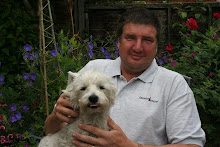 |
Liz's new thermal socks. The price was only
slightly higher than the Tog rating! |
Friends of the Blog will know that I am quite keen on the wildlife and a strong advocate of recording those sightings of our flora and fauna into the on-line 'National Bio-Diversity Database'. I wouldn't be surprised if I might even have a bit of a reputation for bullying everyone else to do the same. You saw a water-rail? Be sure to record that into the ......! You saw a road kill pine marten? Be sure... etc. People all around me on Twitter and Facebook are probably saying to each other, "Shhhh - Don't tell him - he'll make you enter it onto etc ..."
 |
| A very hazy sky for the Dec 3rd Full moon. |
I make no apology for this and I am just as keen to submit other forms of recording to various related databases too - I do, as you may know, the Bumble bees recording through the Summer and , on Monday, I stepped out of the back door to be met by a tree creeper, who reminded me that the 2017/8 Garden Bird Survey started that day. The latter runs for 13 weeks and has you recording the highest numbers of all the garden birds seen at any one time in that week. My one tree creeper was rather outnumbered by a mini-murmuration of 55 starlings.
 |
| My friend's Sligo water-rail sighting. |
The National Bio-Diversity Database has recently been improved and much easier to look at the recorded sightings. Either that or I finally worked out how it was done - it may have always been possible. This has made possible a bit of a friendly competition between counties and some target setting, encouraging, motivational comment from those in charge. Between all of the volunteer recorders, we input 10,000 sightings on each of the 4 big summer months and we have done 70,000 total so far this year. I am in a small minority in Co. Roscommon and had set myself a small personal target of getting 'us' over 800 by year end - we have just recently completed this. What chance 900?
 |
| Fondant icing ready for the Christmas Cake |
Two small personal feathers in the cap - I introduced a fellow gardener to the 'game' last month and helped them to start their own ball rolling with that water-rail they'd found killed on the road while out walking. The bird was fairly intact and they were able to photograph it and posted it to FB, I guessed to get a confirmed ID. Water rails are very rare. There are only records for 21 across the whole country this year. Well now there is a shiny new record up on the Sligo coast and a new recorder to boot.
 |
| The only record in 2017 for Briza minor |
My other, I was amused to note was that I hold the only record for Briza minor (Lesser quaking grass) for 2017. This doesn't really surprise me; I doubt many volunteers are interested in grass where as from my Uni days studying ecology, I always had a thing for grass species - that field wasn't just grass, it was a fascinating seed-hay meadow with catstail, timothy, fescues, rye grasses and the like.
 |
| I am impressed by the rainbow holograms on the new €50 note. |
Some, like the quaking grasses, stuck in my mind because they have unusual flower 'panicles' (spikes). The quaking grasses have seed heads like flattened hop 'cones', so they are dead easy to ID and when I was out dog-walking at Kiltybranks and I spotted some, I just HAD to record it on the database. Only when I was in there looking around, did I learn that mine was a lonely single record. Obviously, Briza minor is not that rare, it just doesn't catch the attention of many volunteer recorders.
 |
New signs warn verge-cutting contractors
not to cut here. |
So Bio-Diversity is a good thing, yes? Well, yes, up to a point. Sometimes you can have too many species or, more specifically, unwanted species. Our lanes are suddenly well peppered with new (bi-lingual) signs warning of the presence of "Invasive Species". Readers will almost certainly know that the local environment is currently suffering from invasions of foreign 'thug' plant species - Japanese Knotweed, Himalayan Balsam and, here in the West, that much-loved 'giant rhubarb' plant, Gunnera manicata.
 |
| Feeding the Christmas Cake. 4 capfuls will do for now. |
Well now the councils are fighting back armed with knowledge of how to stop the plants spreading and also how to eradicate them from existing sites and now also a PLAN. I'd seen all the notices go up and lobbed a question in to the most recent Tidy Towns meeting where one of the guys happens to be a high level Manager in the group responsible for highways maintenance, motorway signage, procedures for road-works gangs and all that malarkey.

He told us that a lot of the 'stopping the spread' is about care in mowing the verges. The seeds (and other grow-able parts) are carried along on the mowing machines (or strimmers) so they needed to tell the contractors to stop cutting where there was a patch and thoroughly clean down the machine between sections. One species (I think the knotweed) must not be cut at all - there is a laborious process of moving through the patch on foot using a hypodermic to inject each intact stem with a systemic chemical which will be taken down into the roots. That process has to be repeated 3 years running to finally stop the weed in its tracks. Good luck with that one lads. Others have to be cut before seed is ripe, like the very allergenic ragweed (Ambrosia artemisiifolia). Sounds obvious but this weed is a real problem in places like Hungary where it gets into the maize and sunflower crops and ripens before they do.
 |
| Our garden makes the Roscommon Herald. |
Finally, while I'm still on plants, the Roscommon Herald have now printed that article by garden writer Paul Kirwan - the edition which came out today. Fame at last? It is a very flattering and generous piece (must have been Liz's chocolate cake!), with a couple of good pictures in it. Thank you very much the newspaper and, in particular Paul Kirwan. You are welcome back any time.












No comments:
Post a Comment